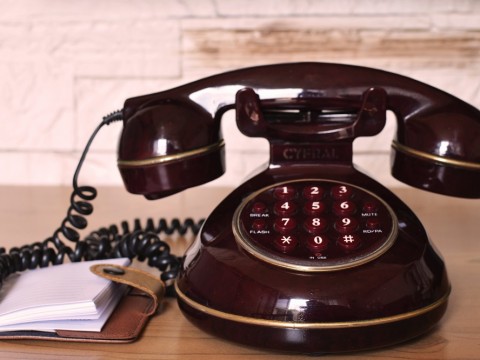The Importance of Intonation in Conversation
Expressing emotion over the phone is not without difficulties. Just like the old adage, it’s not what you say, it’s how you say it!

Imagine this: you’ve sent your best mate a long text detailing plans for the weekend, only to receive a one-word reply: “great”. While your initial reaction might be to worry that such a brief and unimaginative text means that the sender is indifferent - maybe even sarcastic - it’s important to remember one of the key differences between spoken and written conversations. Without being able to hear your friend’s tone of voice, it’s impossible to know whether their “great” is elated or apathetic.
When in doubt, it’s always best to pick up the phone and have a real conversation. Phone calls are not without difficulties of their own, however. As a lack of contextual clues such as body language may still lead us to misinterpret speech, considering intonation is more important than ever. Just like the old adage, it’s not what you say, it’s how you say it!
A simple “hello” has been the default way to answer a call since the phone was invented in 1875. However, since the rise of caller ID we’ve seen a certain change in the way we say “hello”. Historically the greeting was spoken in a questioning tone, as the first thing we needed to know when answering the phone was who the caller was. Nowadays it’s far more common to greet callers with an even, less inflected “hello”, as we often already know who they are, and are simply responding to the summons of the ring tone.
This is just one example of the many ways we modulate intonation on a constant basis. When talking on the phone, we can express emotion and intention as much through the tone of our voice as through the contents of our conversation. While most of the time we do this without even thinking, a little consideration of how we do it can help us avoid misunderstandings and improve those all-important first impressions made over the phone. Here are five ways that your intonation can make or break a phone conversation:
Pitch
This refers to how high or low your voice is at any point in a conversation. While some people naturally have higher voices than others, and women tend to speak in a higher pitch than men, we do tend to alter our pitch to convey emotions. For example, when someone receives surprising news, their voice may suddenly rise in pitch, conveying disbelief. On the other hand, if someone begins to speak in a very low tone, it could be that they are feeling low themselves.
Pace
This is how fast or slow your speech is. While rapid speech may indicate that the speaker is nervous or excited, a steady pace shows confidence, or reflects a topic of a more serious nature. It also pays to note how much you’re speaking, compared to how much the person on the other end of the phone is. If you are dominating the conversation with fast, excitable speech, it may be time to throw in a question to keep the conversation flowing - and give yourself time to breathe!
Power
This refers to where you place the stress in a sentence, and can change the meaning of your speech almost entirely. For example, take the sentence “I didn’t say your cooking was bad!” Depending on where you place the stress in this sentence, you can elicit an entirely different response. An emphasis on the “I” suggests that someone else said that the cooking was bad, whereas an emphasis on the “didn’t” is more indignant, perhaps responding to an accusation. Stressing “cooking” implies that I might think something else is bad, while stressing “bad” suggests that I don’t necessarily think the cooking is good either!
Inflection
Inflection is a movement in pitch, from high to low or vice versa. This is most helpful when it comes to telling questions and statements apart. A question ends with an upward inflection, expectant of a response, whereas a downward inflection at the end of a sentence implies that a particular thought has been completed. You may notice that different accents rely heavily on different inflections. While some American accents can sound like a constant string of questions, with every sentence ending in an upward inflection, Irish accents are known for their sing-song-like rise and fall.
Tone
Tone is the easiest giveaway when it comes to emotion. We often think of vocal tones as being warm or cold. For example, the phrase “see you later” spoken in a warm tone implies excitement at the impending reunion, whereas spoken in a cold tone it could be a clue that the speaker isn’t particularly keen on seeing you after all! Maintaining a friendly, professional tone when making business phone calls is vital, regardless of how you’re actually feeling. When you’re talking to friends and family, however, you can relax a little and let your feelings inform your speech.
There’s a lot more going on in a conversation than just words, and it’s remarkable to consider how many shades of vocal expression and understanding we adopt without even trying! We suggest that you go and practice your intonation right now, by picking up the phone to your parents, and old friend, or even our friendly customer care team at 0333 210 4290!

